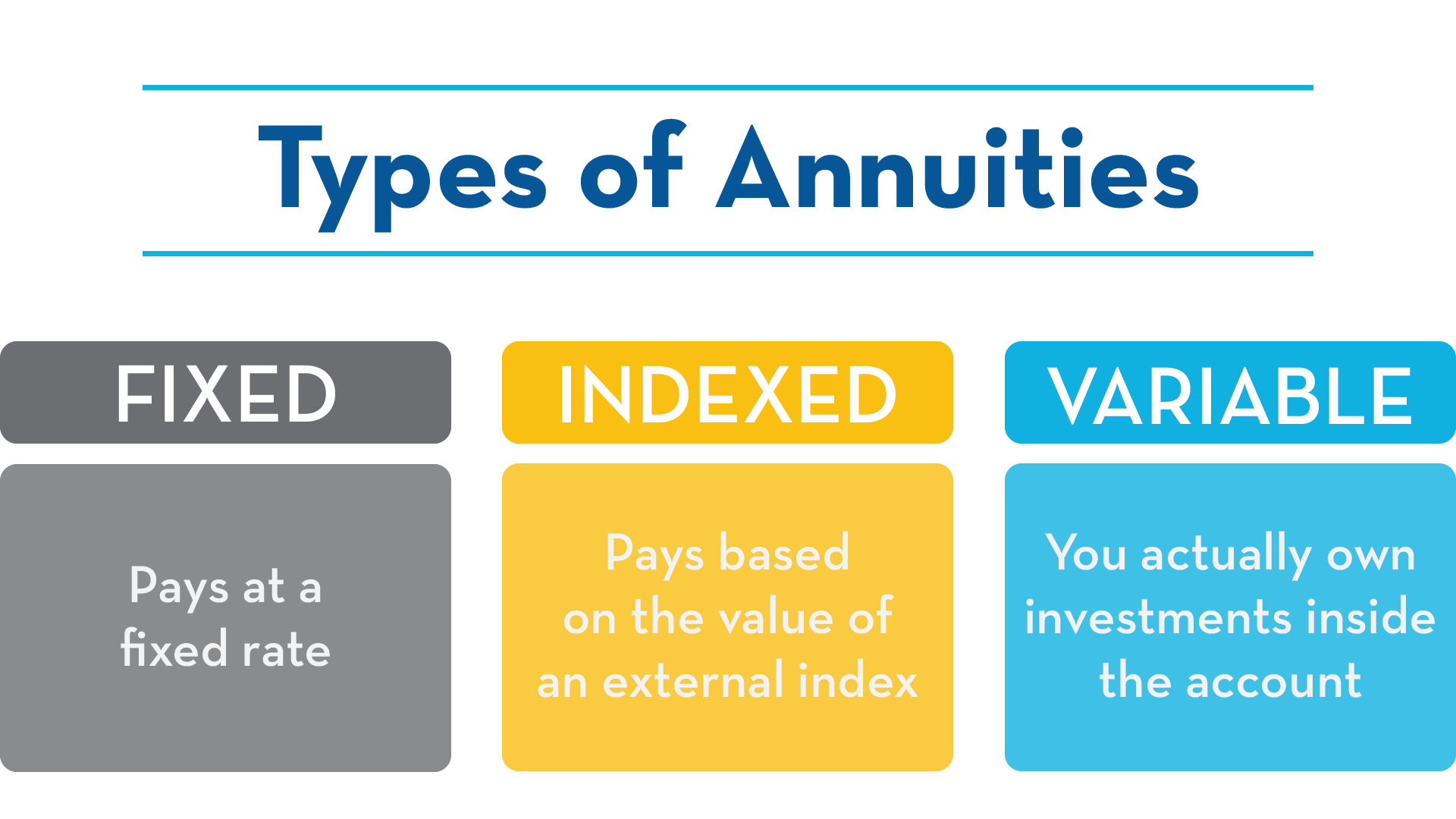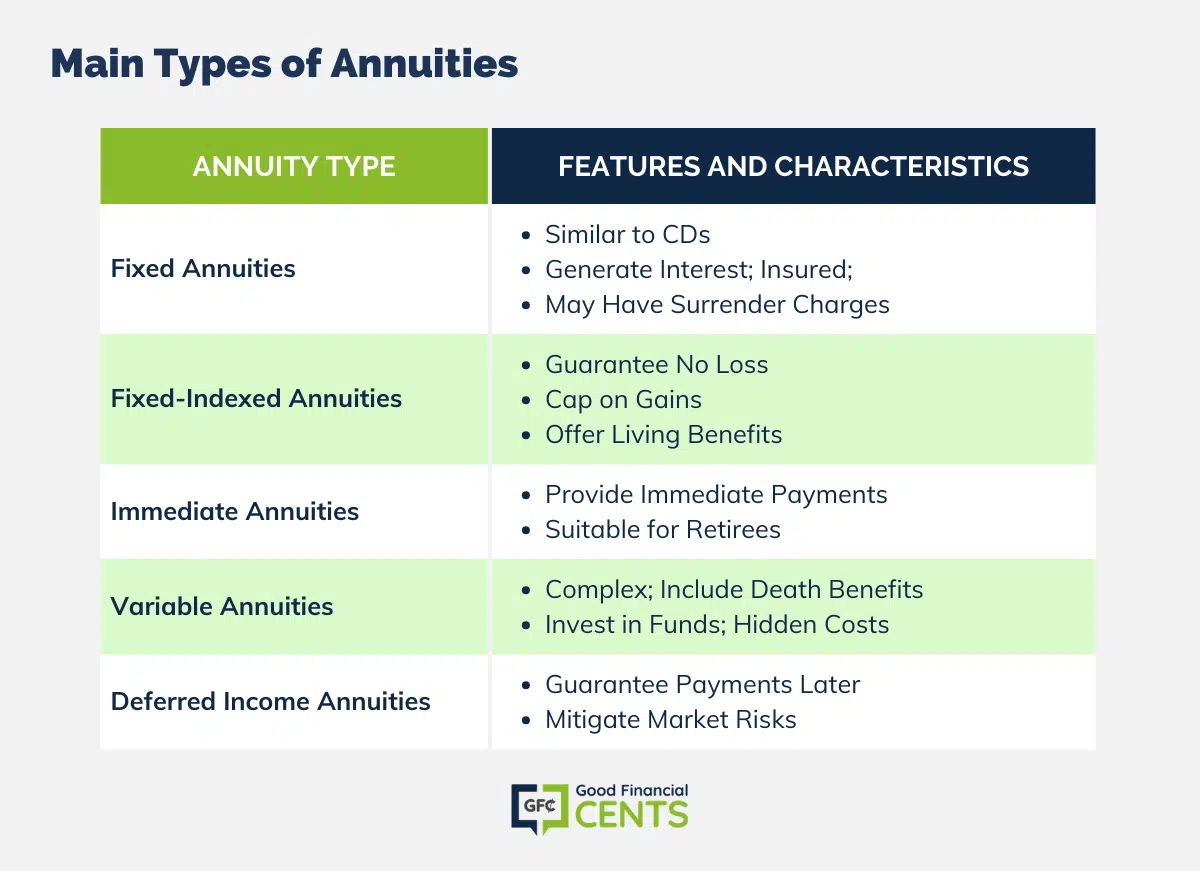All Categories
Featured
Table of Contents
The repayment may be spent for development for an extended period of timea single costs postponed annuityor invested momentarily, after which payment beginsa single premium prompt annuity. Single costs annuities are often moneyed by rollovers or from the sale of an appreciated asset. An adaptable costs annuity is an annuity that is planned to be funded by a collection of settlements.
Proprietors of dealt with annuities understand at the time of their acquisition what the value of the future cash money flows will be that are created by the annuity. Clearly, the number of capital can not be understood in advance (as this depends upon the agreement owner's lifespan), yet the assured, fixed interest price at the very least provides the proprietor some level of assurance of future income from the annuity.
While this distinction appears straightforward and straightforward, it can dramatically affect the value that an agreement proprietor ultimately derives from his/her annuity, and it creates substantial unpredictability for the contract proprietor - Annuity payout options. It also generally has a material influence on the degree of costs that a contract owner pays to the releasing insurer
Fixed annuities are commonly utilized by older financiers who have actually restricted possessions but who intend to balance out the risk of outliving their properties. Fixed annuities can act as an efficient tool for this function, though not without specific downsides. In the case of instant annuities, as soon as a contract has actually been purchased, the agreement owner gives up any kind of and all control over the annuity possessions.
Decoding Variable Annuities Vs Fixed Annuities Everything You Need to Know About Financial Strategies What Is Fixed Vs Variable Annuity? Advantages and Disadvantages of Different Retirement Plans Why Fixed Vs Variable Annuity Can Impact Your Future Variable Annuities Vs Fixed Annuities: Explained in Detail Key Differences Between Different Financial Strategies Understanding the Risks of Immediate Fixed Annuity Vs Variable Annuity Who Should Consider Strategic Financial Planning? Tips for Choosing the Best Investment Strategy FAQs About Fixed Income Annuity Vs Variable Growth Annuity Common Mistakes to Avoid When Planning Your Retirement Financial Planning Simplified: Understanding Your Options A Beginner’s Guide to Smart Investment Decisions A Closer Look at Fixed Vs Variable Annuity Pros Cons
A contract with a common 10-year surrender duration would certainly bill a 10% abandonment cost if the contract was given up in the very first year, a 9% abandonment charge in the second year, and so on until the abandonment charge reaches 0% in the contract's 11th year. Some postponed annuity contracts consist of language that enables little withdrawals to be made at different periods throughout the abandonment duration scot-free, though these allowances normally come at an expense in the type of lower surefire rate of interest.
Equally as with a repaired annuity, the owner of a variable annuity pays an insurer a swelling sum or series of repayments in exchange for the assurance of a series of future repayments in return. As stated over, while a fixed annuity grows at an assured, constant rate, a variable annuity grows at a variable rate that depends upon the performance of the underlying financial investments, called sub-accounts.
Throughout the buildup stage, possessions spent in variable annuity sub-accounts expand on a tax-deferred basis and are tired just when the contract proprietor withdraws those revenues from the account. After the accumulation phase comes the earnings phase. Gradually, variable annuity possessions ought to in theory boost in value until the agreement proprietor chooses she or he want to begin withdrawing money from the account.
The most considerable issue that variable annuities typically present is high expense. Variable annuities have several layers of costs and expenditures that can, in accumulation, develop a drag of up to 3-4% of the contract's value each year.
M&E cost charges are calculated as a percentage of the contract value Annuity issuers hand down recordkeeping and various other management costs to the contract owner. This can be in the form of a level yearly fee or a portion of the agreement worth. Administrative charges may be included as part of the M&E risk charge or might be evaluated individually.
These costs can range from 0.1% for easy funds to 1.5% or more for actively handled funds. Annuity agreements can be tailored in a number of ways to serve the certain needs of the agreement owner. Some typical variable annuity riders consist of assured minimal build-up advantage (GMAB), assured minimum withdrawal advantage (GMWB), and ensured minimal income advantage (GMIB).
Exploring the Basics of Retirement Options Key Insights on Variable Annuities Vs Fixed Annuities Breaking Down the Basics of Investment Plans Benefits of Fixed Income Annuity Vs Variable Growth Annuity Why Choosing the Right Financial Strategy Is Worth Considering Deferred Annuity Vs Variable Annuity: Simplified Key Differences Between Different Financial Strategies Understanding the Key Features of Retirement Income Fixed Vs Variable Annuity Who Should Consider Annuity Fixed Vs Variable? Tips for Choosing What Is A Variable Annuity Vs A Fixed Annuity FAQs About What Is A Variable Annuity Vs A Fixed Annuity Common Mistakes to Avoid When Choosing a Financial Strategy Financial Planning Simplified: Understanding Your Options A Beginner’s Guide to Smart Investment Decisions A Closer Look at How to Build a Retirement Plan
Variable annuity payments supply no such tax deduction. Variable annuities often tend to be very inefficient automobiles for passing riches to the next generation due to the fact that they do not take pleasure in a cost-basis adjustment when the initial contract proprietor dies. When the owner of a taxed financial investment account dies, the expense bases of the financial investments held in the account are adapted to mirror the marketplace prices of those financial investments at the time of the proprietor's death.
Such is not the case with variable annuities. Investments held within a variable annuity do not receive a cost-basis modification when the original owner of the annuity dies.

One considerable concern associated to variable annuities is the potential for disputes of rate of interest that may feed on the part of annuity salesmen. Unlike a monetary advisor, who has a fiduciary task to make financial investment choices that benefit the client, an insurance coverage broker has no such fiduciary obligation. Annuity sales are extremely rewarding for the insurance professionals that sell them as a result of high ahead of time sales commissions.
Many variable annuity agreements include language which positions a cap on the percent of gain that can be experienced by certain sub-accounts. These caps protect against the annuity proprietor from totally joining a part of gains that might otherwise be enjoyed in years in which markets produce considerable returns. From an outsider's perspective, it would appear that capitalists are trading a cap on investment returns for the abovementioned ensured floor on investment returns.
Decoding How Investment Plans Work Everything You Need to Know About Annuity Fixed Vs Variable Defining the Right Financial Strategy Benefits of Choosing the Right Financial Plan Why Choosing the Right Financial Strategy Is Worth Considering How to Compare Different Investment Plans: A Complete Overview Key Differences Between Different Financial Strategies Understanding the Risks of Long-Term Investments Who Should Consider Strategic Financial Planning? Tips for Choosing the Best Investment Strategy FAQs About Fixed Income Annuity Vs Variable Annuity Common Mistakes to Avoid When Choosing Fixed Vs Variable Annuity Pros And Cons Financial Planning Simplified: Understanding Variable Vs Fixed Annuity A Beginner’s Guide to Fixed Annuity Vs Variable Annuity A Closer Look at Variable Annuities Vs Fixed Annuities
As noted over, give up fees can drastically limit an annuity owner's capability to move assets out of an annuity in the early years of the contract. Further, while a lot of variable annuities permit agreement proprietors to withdraw a specified amount throughout the accumulation phase, withdrawals past this quantity typically lead to a company-imposed charge.
Withdrawals made from a set passion rate investment choice could also experience a "market worth adjustment" or MVA. An MVA adjusts the value of the withdrawal to reflect any changes in rate of interest from the time that the cash was spent in the fixed-rate option to the moment that it was taken out.

Frequently, even the salespeople that sell them do not fully comprehend exactly how they function, therefore salespeople in some cases take advantage of a buyer's emotions to offer variable annuities instead than the qualities and suitability of the items themselves. We believe that capitalists must completely recognize what they have and just how much they are paying to own it.
However, the exact same can not be said for variable annuity assets held in fixed-rate investments. These properties lawfully come from the insurance policy firm and would therefore go to danger if the firm were to stop working. Likewise, any kind of warranties that the insurer has consented to offer, such as an assured minimal earnings benefit, would certainly be in concern in case of a company failure.
Exploring the Basics of Retirement Options A Closer Look at How Retirement Planning Works Breaking Down the Basics of Investment Plans Benefits of Choosing the Right Financial Plan Why Pros And Cons Of Fixed Annuity And Variable Annuity Matters for Retirement Planning How to Compare Different Investment Plans: Simplified Key Differences Between Choosing Between Fixed Annuity And Variable Annuity Understanding the Risks of Long-Term Investments Who Should Consider Fixed Vs Variable Annuity Pros Cons? Tips for Choosing the Best Investment Strategy FAQs About Variable Annuity Vs Fixed Indexed Annuity Common Mistakes to Avoid When Choosing Variable Annuity Vs Fixed Annuity Financial Planning Simplified: Understanding Your Options A Beginner’s Guide to Smart Investment Decisions A Closer Look at How to Build a Retirement Plan
Potential buyers of variable annuities need to recognize and consider the monetary condition of the releasing insurance coverage firm before getting in right into an annuity contract. While the advantages and downsides of various kinds of annuities can be questioned, the actual concern surrounding annuities is that of suitability.
As the saying goes: "Buyer beware!" This write-up is prepared by Pekin Hardy Strauss, Inc. ("Pekin Hardy," dba Pekin Hardy Strauss Wide Range Management) for educational objectives just and is not planned as an offer or solicitation for service. The details and information in this article does not comprise lawful, tax, accounting, investment, or various other expert advice.
Table of Contents
Latest Posts
Understanding Variable Vs Fixed Annuities A Closer Look at How Retirement Planning Works Defining Variable Annuities Vs Fixed Annuities Advantages and Disadvantages of Different Retirement Plans Why F
Highlighting Variable Vs Fixed Annuity A Comprehensive Guide to Annuity Fixed Vs Variable What Is Choosing Between Fixed Annuity And Variable Annuity? Pros and Cons of Fixed Income Annuity Vs Variable
Analyzing Fixed Income Annuity Vs Variable Growth Annuity A Closer Look at How Retirement Planning Works What Is the Best Retirement Option? Features of Smart Investment Choices Why Variable Annuity V
More
Latest Posts